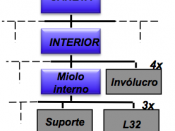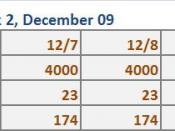Supply chain management is a crucial area of B2B Electronic Commerce. It represents planning, organizing and managing your inventory online. Consider the following situation that illustrates how e-commerce has facilitated this management of the supply chain.
If a businesses stock is stored in a database that is connected to both the office and the warehouse, then at any given moment you can check your stock and update them. If this system is connected to a customer's site that is ordering from you then this will automatically update the warehouse and place the order. Furthermore, if the stock levels of a particular product go below a recorded level then the suppliers (who are also connected to the system) dispatch the required quantity of the good. When the warehouse receives the product the suppliers are informed of delivery and a notice is sent to the warehouse that updates the stock automatically. So EDI basically tries to give all parties involved a real-time view of what is happening in the day-to-day running of each business.
This helps when businesses are trying to optimize their supply chain to make their processes more efficient. It is also interesting to note that e-commerce has empowered suppliers to a level that allows them to operate very efficiently. Knowledge is power, as the saying goes, and with the connections between supplier and customer, due to either private networks or the Internet, suppliers have a wealth of knowledge available at any time. This enables the supplier to anticipate demand and adjust production and delivery accordingly. They no longer have to be re-active in their approach to business; e-commerce has allowed them to be pro-active.
Now, let's look at costs associated with inventory. There are four major costs associated with inventory: Holding costs, Setup costs, Ordering costs, Shortage costs. Holding...


